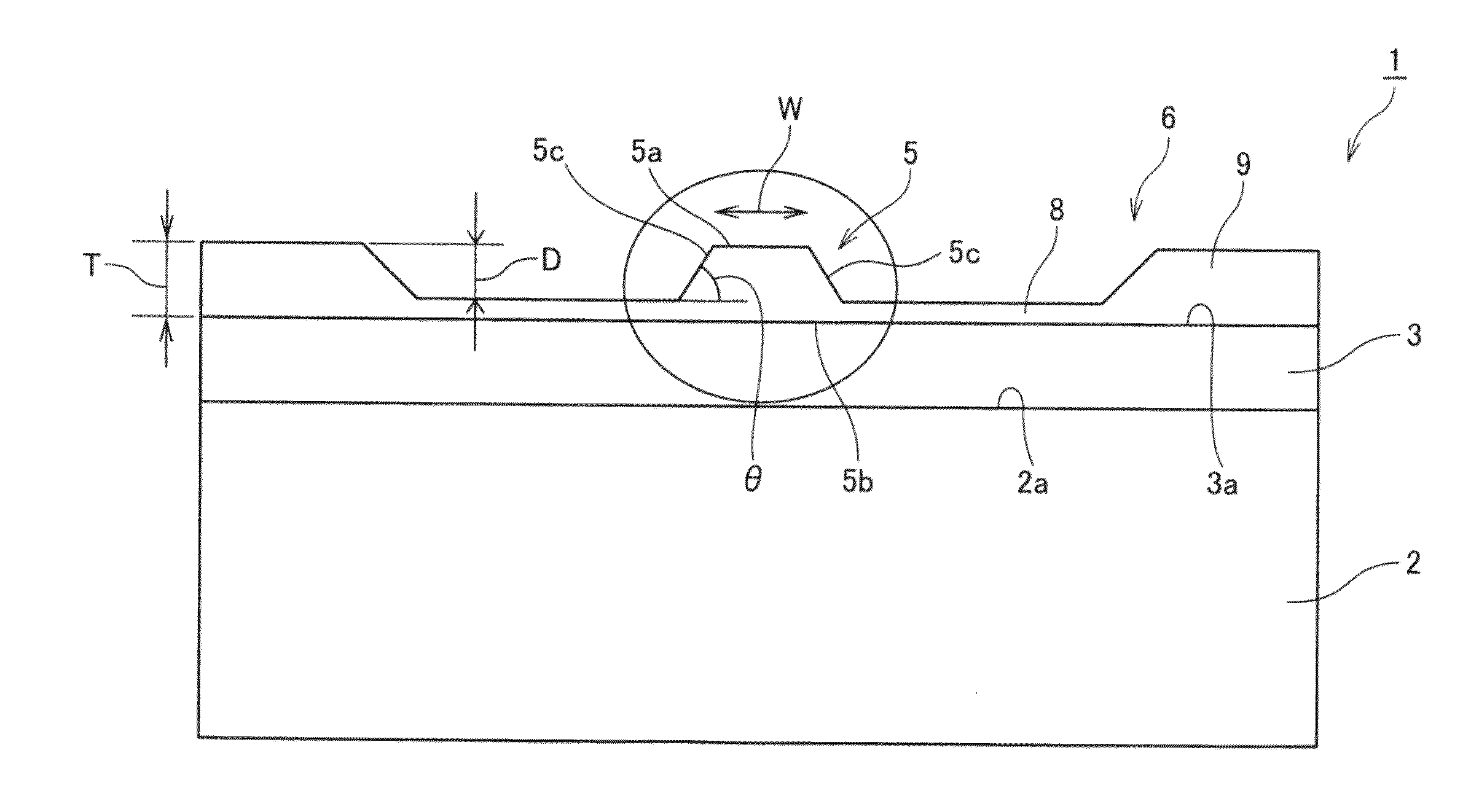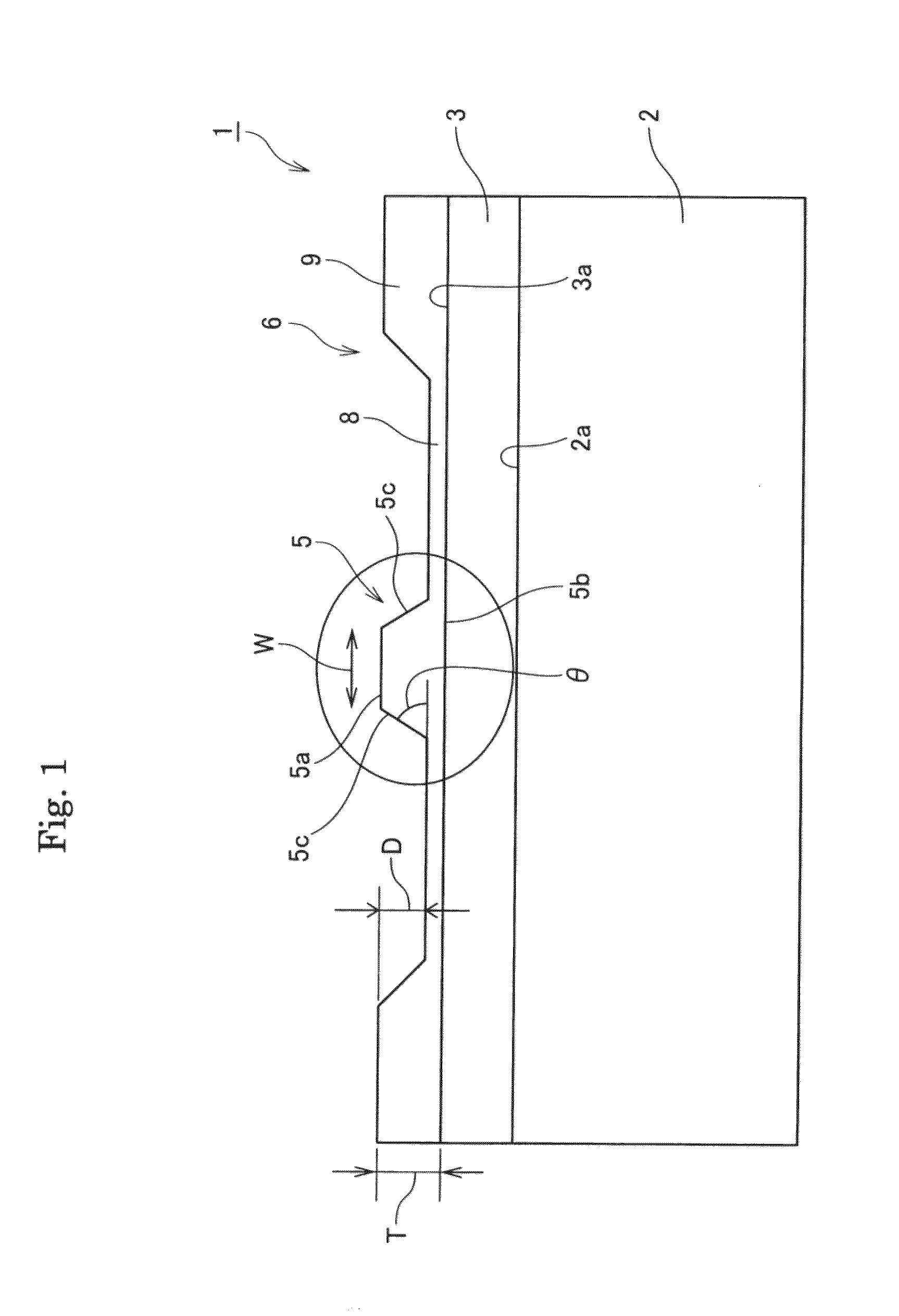Optical Waveguide Devices
a technology of optical waveguides and thin layers, applied in the direction of optical waveguide light guides, instruments, optics, etc., can solve the problems of poor adhesion of the loaded ridge portion and the thin layer, poor adhesion to the surface of the thin layer, and lowered production yield, so as to prevent peeling, reduce propagation loss, and good adhesion
- Summary
- Abstract
- Description
- Claims
- Application Information
AI Technical Summary
Benefits of technology
Problems solved by technology
Method used
Image
Examples
##ventive example 1
Inventive Example 1
[0072]It was produced the device 1 as described in FIGS. 1, 4(a) and 5.
[0073]Specifically, it was produced a laminated body including the thin layer 3 of MgO-doped lithium niobate (thickness of 2.0 μm), clad layer of SiO2, adhesive layer and supporting body 2 composed of a Y-cut plate made of non-doped lithium niobate and having a thickness of 0.5 mm. A film of Ta2O5 with a thickness of 1.5 μm was formed on the thin layer 3 by sputtering.
[0074]Then, films of molybdenum each having a thickness of 100 nm were formed on the upper face 3a of the thin layer 3 and bottom face of the supporting body 2, respectively. Then, resist patterns were formed on the thin layer and on the molybdenum film, respectively, by photolithography method (application of the resist and development). Further, the resist was applied onto the whole surface of the bottom face of the supporting body 2. The molybdenum film was then subjected to wet etching to remove the resist and to leave a patte...
##ventive example 2
Inventive Example 2
[0088]The device was produced as described in the inventive example 1, except that the material of the thin layer 3 was made MgO-doped lithium tantalate single crystal. As a result, it was obtained the similar result as that in the inventive example 1. Further, as the tape peeling test was performed, the adhesion of the tape onto the film and the peeling of the ridge portion from the device were not observed.
##ventive example 3
Inventive Example 3
[0089]The device was produced as described in the inventive example 1, except that the material of the thin layer 3 was made yttrium vanadate crystal. For confirming the properties of the optical waveguide, the propagation loss was measured at a wavelength of 980 nm as the inventive example 1 to obtain a value of 0.5 dB / cm. Further, as the tape peeling test was performed, the adhesion of the tape onto the film and the peeling of the ridge portion from the device were not observed.
PUM
 Login to View More
Login to View More Abstract
Description
Claims
Application Information
 Login to View More
Login to View More - R&D
- Intellectual Property
- Life Sciences
- Materials
- Tech Scout
- Unparalleled Data Quality
- Higher Quality Content
- 60% Fewer Hallucinations
Browse by: Latest US Patents, China's latest patents, Technical Efficacy Thesaurus, Application Domain, Technology Topic, Popular Technical Reports.
© 2025 PatSnap. All rights reserved.Legal|Privacy policy|Modern Slavery Act Transparency Statement|Sitemap|About US| Contact US: help@patsnap.com



